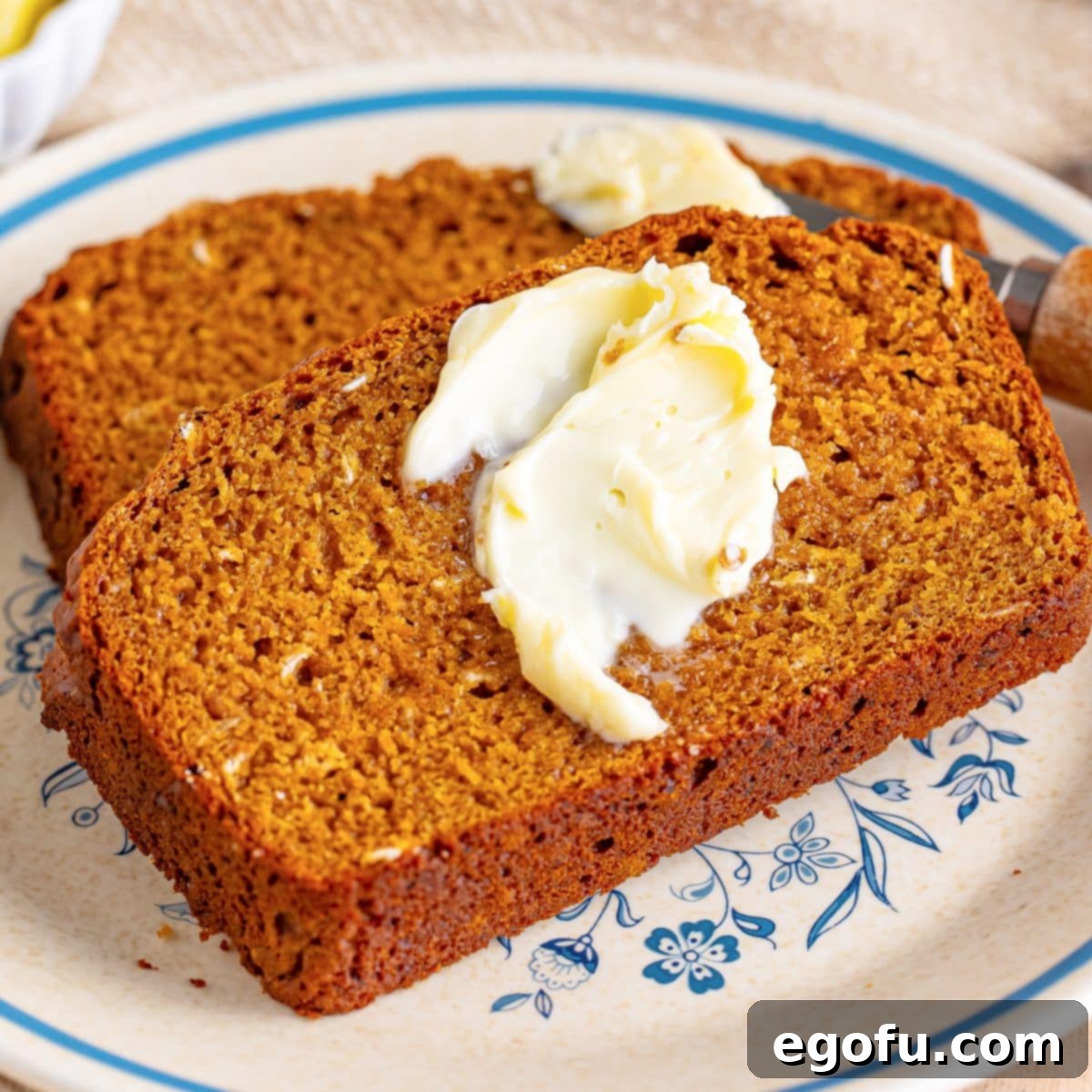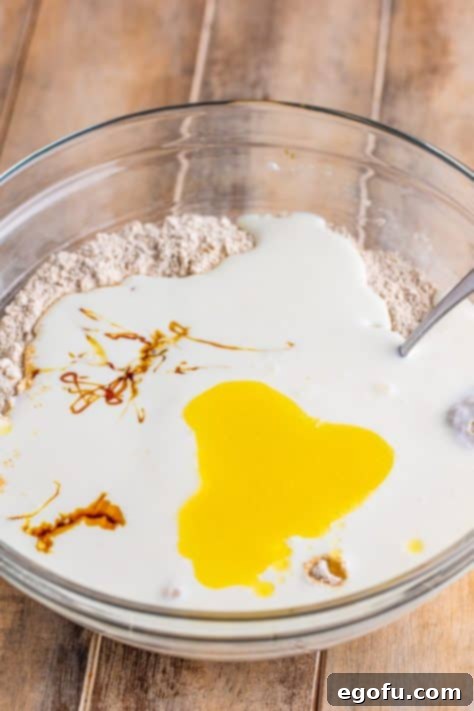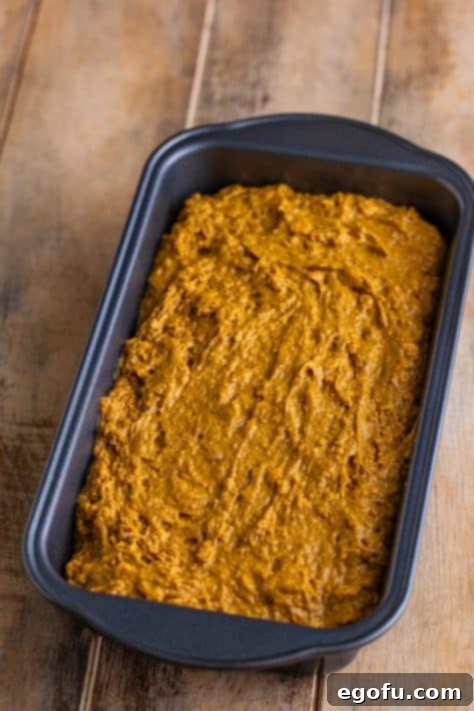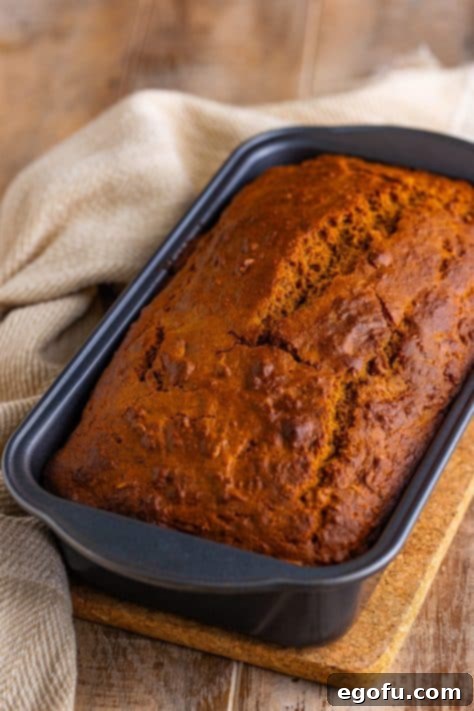Irish Brown Bread, a beloved staple of Irish cuisine, is much more than just a simple loaf. This delightful quick bread is celebrated for its incredibly soft texture, wholesome goodness, and a subtle sweetness that truly sets it apart. Crafted with a blend of whole wheat flour, hearty oats, and a touch of molasses, it boasts a distinctive warm brown hue and a rich, earthy flavor profile that comforts the soul. Prepare to discover how effortlessly you can bring the authentic taste of Ireland into your kitchen with this easy-to-follow, delicious recipe.
Baking Bliss: An Effortless Quick Bread Recipe for Every Home
Is there anything more satisfying than the aroma of freshly baked bread filling your home, knowing you created it from scratch? For many, the thought of baking bread can seem daunting, conjuring images of intricate yeast doughs and endless kneading. However, this traditional Irish Brown Bread recipe simplifies the art of bread-making, placing it firmly within the grasp of even the most novice baker. As a “quick bread,” it relies on baking soda and buttermilk for its rise, eliminating the need for yeast, proving, and extensive hands-on time. It’s a true set-it-and-forget-it marvel, where you simply combine the ingredients, pop it in the oven, and await a golden, fragrant masterpiece.
What elevates this particular Irish Brown Bread from simply good to truly exceptional is its harmonious blend of ingredients that deliver both incredible flavor and a wonderfully moist texture. The inclusion of oats and wheat germ provides a rustic, satisfying chew, while the molasses and a hint of honey infuse each slice with a gentle sweetness and a beautiful deep brown color. Imagine slathering a warm slice with a generous dollop of creamy Kerrygold Butter – the rich, salty notes of the butter perfectly complement the bread’s earthy sweetness, creating an experience that is nothing short of amazing. This wholesome, homemade bread isn’t just a side dish; it’s a versatile companion. It’s perfect for dipping into hearty stews and warming soups, serving alongside a robust cheese platter, spreading with jam for breakfast, or simply savoring with a hot cup of coffee or tea for a comforting afternoon treat. It’s a testament to how simple ingredients can yield extraordinary results, making it an ideal choice for an easy, delicious homemade bread.
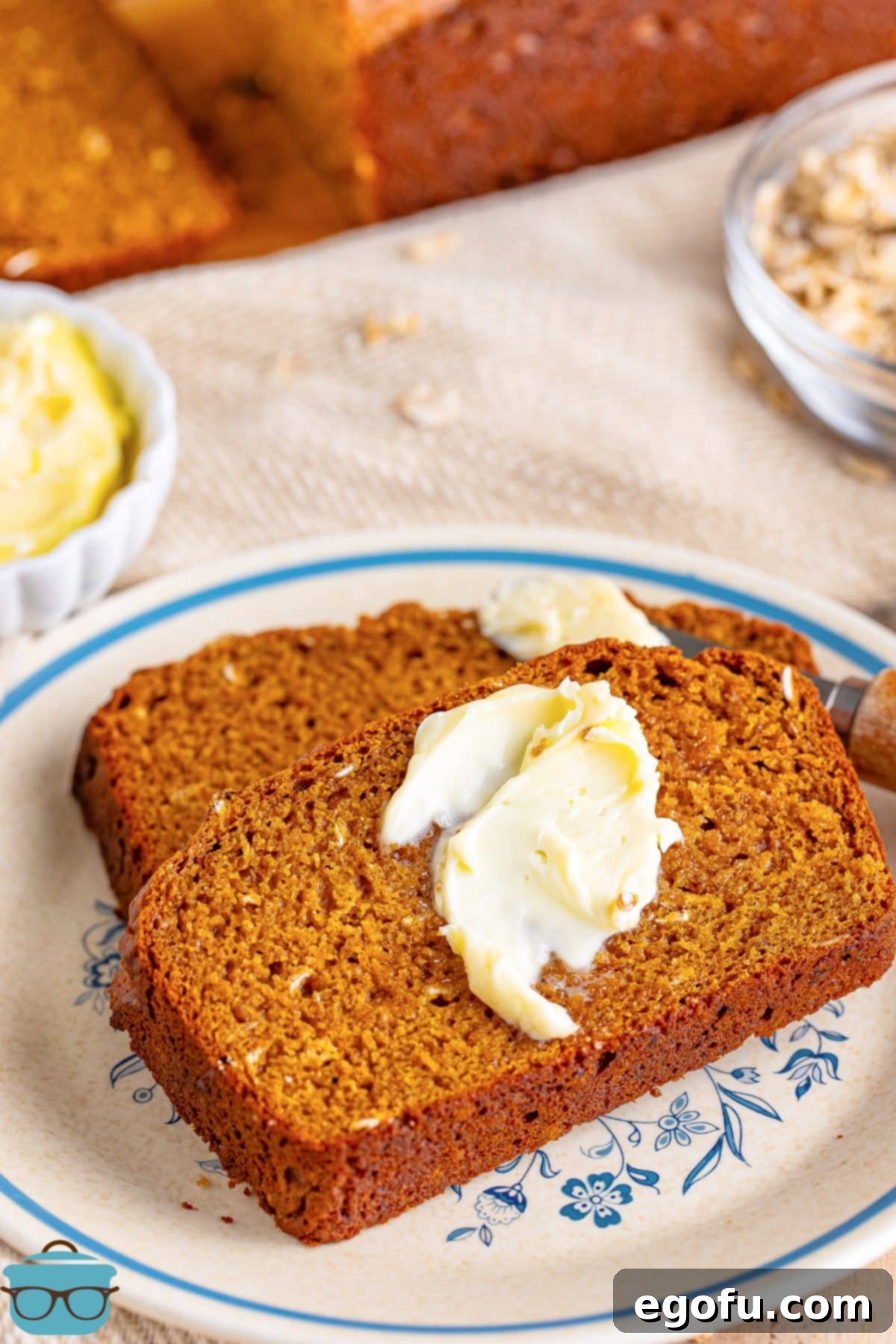
Frequently Asked Questions About Irish Brown Bread
Both Irish Soda Bread and Irish Brown Bread are classic quick breads, meaning they achieve their rise through a chemical reaction (typically baking soda interacting with an acid like buttermilk) rather than yeast. This makes them inherently faster to prepare than traditional yeasted breads. The primary distinction lies in their flour composition and overall flavor profile. Traditional Irish Soda Bread is typically made using fine white all-purpose flour, resulting in a lighter-colored, often denser loaf with a milder taste. In contrast, authentic Irish Brown Bread prominently features whole wheat flour, which gives it its characteristic dark color, nuttier flavor, and robust texture. Furthermore, brown bread often includes natural sweeteners like molasses and honey, contributing to its distinct slight sweetness and deeper, richer taste compared to the savory or subtly sweet notes of soda bread. The addition of oats and wheat germ in brown bread also further distinguishes its texture and nutritional content, making it a truly hearty and wholesome loaf.
A common culprit for dry quick breads and other baked goods is inaccurate flour measurement. Flour is a foundational ingredient, and adding too much can drastically alter the liquid-to-dry ingredient ratio, leading to a dense, crumbly, and dry final product. When you simply scoop your measuring cup directly into the flour bag, you risk compacting the flour, inadvertently adding more than the recipe calls for. This excess flour absorbs more moisture, leaving less for the overall dough and resulting in a parched loaf. To ensure precise measurements, especially if you don’t own a digital kitchen scale (which is the most accurate method for baking), consider using the “spoon and level” technique. First, gently fluff the flour in its container. Then, use a spoon to lightly scoop the flour into your measuring cup until it overflows. Finally, use the flat edge of a butter knife or a straight spatula to level off the excess flour, ensuring a perfectly measured cup. This method helps prevent overpacking and guarantees a consistently moist and tender loaf every time. Additionally, overbaking can also contribute to dryness, so always keep an eye on your bread and test for doneness at the lower end of the recommended baking time.
Molasses, a key ingredient in imparting the signature deep color and unique flavor to our Irish Brown Bread recipe, might not be a staple in every pantry, but it’s readily available in most grocery stores. You’ll typically find it in the baking aisle, often situated near other liquid sweeteners like corn syrup or honey, usually sold in jars or squeeze bottles. There are different types of molasses – light, dark, and blackstrap – each with varying degrees of sweetness and intensity. For most baking, light or dark molasses is suitable, providing a rich, slightly smoky sweetness. If you’re new to using molasses and wondering how to incorporate it into other recipes, you’ll be pleased to know it’s incredibly versatile. Beyond its crucial role in this delicious bread, molasses adds depth and richness to a variety of sweet and savory dishes. It’s the secret ingredient for authentic Baked Beans, contributes to the rich tang of Homemade BBQ Sauce, and is indispensable in festive treats like Gingerbread Cupcakes and No Bake Gingerbread Cheesecake. Its distinctive robust flavor and thick, syrupy consistency make it a fantastic natural sweetener and a good source of iron and other minerals.
Wheat germ is a nutritional powerhouse, representing the most nutrient-dense part of the wheat kernel. It’s packed with essential nutrients like Vitamin E, folate, magnesium, zinc, and thiamine, along with protein and dietary fiber, making it a wonderful addition for a boost of goodness to your baking. In this Irish Brown Bread, wheat germ contributes significantly to both the texture, adding a pleasant chewiness and subtle crunch, and the flavor, lending a delicate nutty undertone that enhances the wholesome character of the bread. While it might not be a common ingredient for everyone, it’s generally easy to locate in grocery stores. Look for it in the baking aisle, often near specialty flours or in the cereal aisle alongside oatmeal and other breakfast grains. Popular brands like Bob’s Red Mill typically offer it in bags or containers. Once opened, it’s crucial to store wheat germ in the refrigerator (or even the freezer) to preserve its freshness and prevent its natural oils from going rancid. Beyond bread, wheat germ is fantastic sprinkled over cereal, yogurt, or oatmeal, and it can be blended into smoothies for an extra nutritional kick, making it a versatile ingredient to keep on hand.
To keep your freshly baked Irish Brown Bread at its best, proper storage is key. At room temperature, the loaf will typically stay fresh and delicious for up to 5 days. For optimal freshness and to prevent it from drying out, ensure the cooled bread is wrapped tightly in plastic wrap or aluminum foil, or stored in an airtight container. If you wish to enjoy this delightful bread for a longer period, it freezes exceptionally well. Simply wrap the cooled loaf (either whole or pre-sliced for convenience) tightly in plastic wrap, then add an additional layer of heavy-duty aluminum foil, and store it in the freezer for up to 3 months. When you’re ready to enjoy a slice, you can thaw it at room temperature, or gently warm individual slices in a toaster or oven for that fresh-baked taste and texture. Freezing allows you the convenience of always having a comforting loaf of homemade Irish Brown Bread on hand.
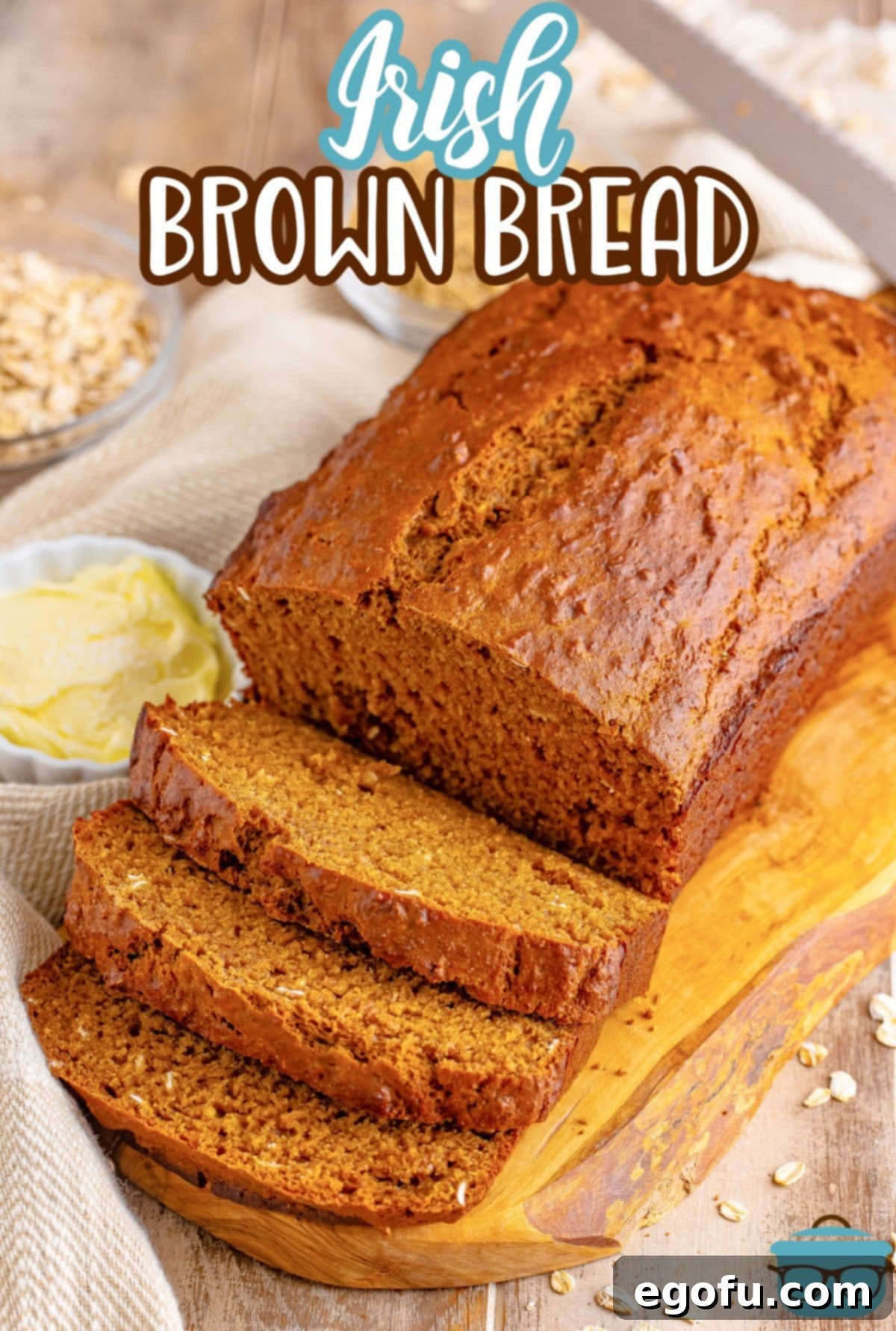
Key Ingredients for Authentic Irish Brown Bread
Crafting the perfect loaf of Irish Brown Bread relies on a few key ingredients, each playing an essential role in achieving its signature flavor and texture. Here’s a closer look at what you’ll need and why each component is important:
- Whole Wheat Flour: This is the star of our brown bread, providing its distinct earthy flavor, rich color, and hearty texture. This recipe uses a thoughtful combination of whole wheat and all-purpose flour to strike a perfect balance, ensuring a loaf that’s both wholesome and wonderfully tender. While it might be tempting to experiment with different flour ratios, sticking to the specified combination is highly recommended for achieving the intended texture and flavor, as it has been carefully developed to yield ideal results.
- All-Purpose Flour: Working in conjunction with the whole wheat flour, all-purpose flour contributes to the bread’s overall structure and ensures a softer, lighter crumb. It helps prevent the loaf from becoming too dense, providing a delicate balance to the robustness of the whole wheat.
- Wheat Germ: As discussed in our FAQ section above, wheat germ is the nutrient-dense heart of the wheat berry. It adds a subtle nutty flavor and extra texture to the bread, along with a boost of essential vitamins and minerals. Look for it in the baking or cereal aisle of your grocery store. Remember to store it in the refrigerator once opened to maintain its freshness.
- Rolled Oats: For that characteristic texture and wholesome feel, old-fashioned rolled oats (often labeled as “large flake” or “traditional”) are crucial. These oats maintain their shape and provide a pleasant chewiness throughout the loaf. Avoid quick-cooking or instant oats, as they will break down too much during baking and won’t provide the desired structural integrity and hearty texture.
- Baking Soda: This leavening agent is vital for quick breads like Irish Brown Bread. When combined with the acidic buttermilk, baking soda creates carbon dioxide bubbles, which cause the bread to rise beautifully and achieve its airy, tender crumb without the need for any yeast or lengthy proving times.
- Salt: A fundamental ingredient in all baking, salt doesn’t just add flavor; it also plays a crucial role in balancing the sweetness and enhancing all the other ingredients, bringing depth and complexity to the bread’s overall profile.
- Buttermilk: The cornerstone of authentic Irish quick breads, buttermilk is an irreplaceable ingredient in this recipe. Its natural acidity reacts with the baking soda to provide essential lift, while its unique flavor contributes a pleasant tang and incredible tenderness to the loaf. If you don’t have buttermilk on hand, don’t substitute it with regular milk; instead, you can easily make your own homemade version by adding a tablespoon of lemon juice or white vinegar to a cup of regular milk and letting it sit for 5-10 minutes until it slightly curdles. However, for the most authentic flavor and texture, using true buttermilk is always recommended.
- Molasses: This dark, viscous syrup is responsible for much of the Irish Brown Bread’s deep brown color and its signature rich, earthy sweetness. It also adds significant moisture, helping to keep the bread soft and tender for longer. Refer to the FAQ section for tips on where to find it and other delicious ways to incorporate this unique sweetener into your cooking.
- Honey: Complementing the molasses, honey contributes an additional layer of natural sweetness and a lovely subtle flavor. While dark brown sugar can be used as a substitute in a pinch, using honey as specified in the recipe will truly help you achieve the perfect, balanced flavor profile that makes this bread so special.
- Salted Butter: Real, melted salted butter provides richness and a wonderful depth of flavor to the bread. This isn’t the place for margarine; the quality of butter truly makes a significant difference in the final taste and luxurious texture of your homemade loaf.
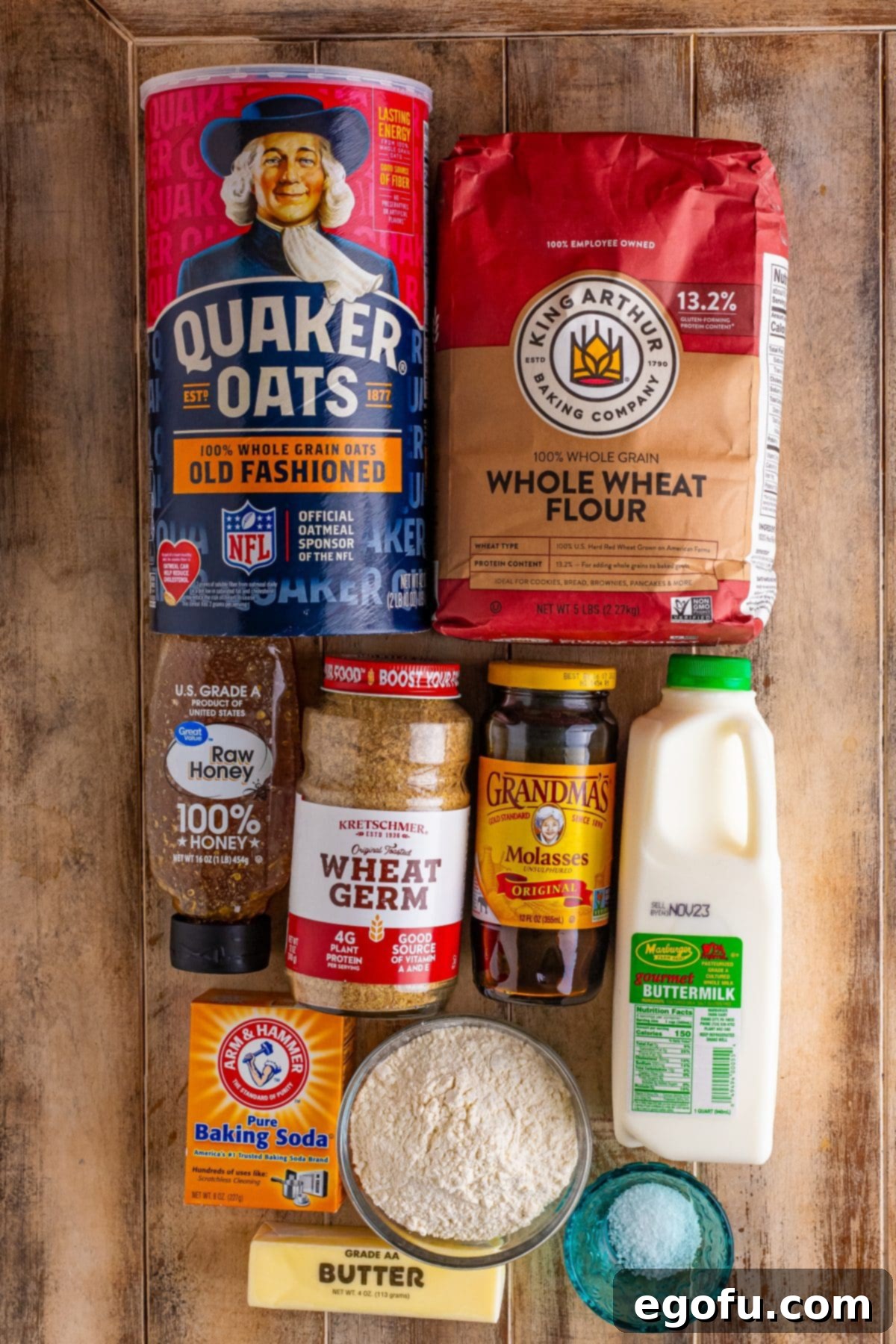
How to Bake Your Own Delicious Irish Brown Bread
Baking this heartwarming and wholesome Irish Brown Bread is a straightforward process, promising a wonderfully fragrant and flavorful loaf with minimal effort. Follow these simple steps to bring this traditional delight to your table, perfect for any occasion:
- Prepare Your Pan and Preheat Oven: Begin by preheating your oven to 350°F (175°C). Lightly grease and flour (or use a baking spray with flour) a standard 9×5-inch loaf pan to ensure your bread releases easily after baking. This step is crucial for a clean release and a beautifully shaped loaf. Set the prepared pan aside.
- Combine Dry Ingredients: In a large mixing bowl, thoroughly whisk together the whole wheat flour, all-purpose flour, wheat germ, rolled oats, baking soda, and salt. Ensure these dry ingredients are well combined and evenly distributed. This uniformity is important for the leavening agent (baking soda) to work effectively throughout the dough.
- Incorporate Wet Ingredients: To the bowl containing the dry ingredients, pour in the buttermilk, molasses, honey, and the melted salted butter. Using a sturdy spoon or spatula, gently stir everything together just until no dry patches of flour remain. It’s important not to overmix the dough; a few small lumps are perfectly fine and will help keep the bread wonderfully tender. Overmixing can overdevelop the gluten, resulting in a tougher, chewier loaf.
- Transfer to Loaf Pan: Carefully spoon the thick, somewhat sticky dough into your prepared loaf pan. Use the back of the spoon or a spatula to gently spread and smooth out the top of the dough for an even finish and consistent baking.
- Bake to Golden Perfection: Place the loaf pan in the preheated oven and bake for approximately 50 to 55 minutes. The bread is done when a wooden skewer or toothpick inserted into the very center comes out clean, and the crust is a beautiful deep golden-brown. If you notice the top browning too quickly during baking, you can loosely tent the loaf with aluminum foil for the last 10-15 minutes to prevent over-browning.

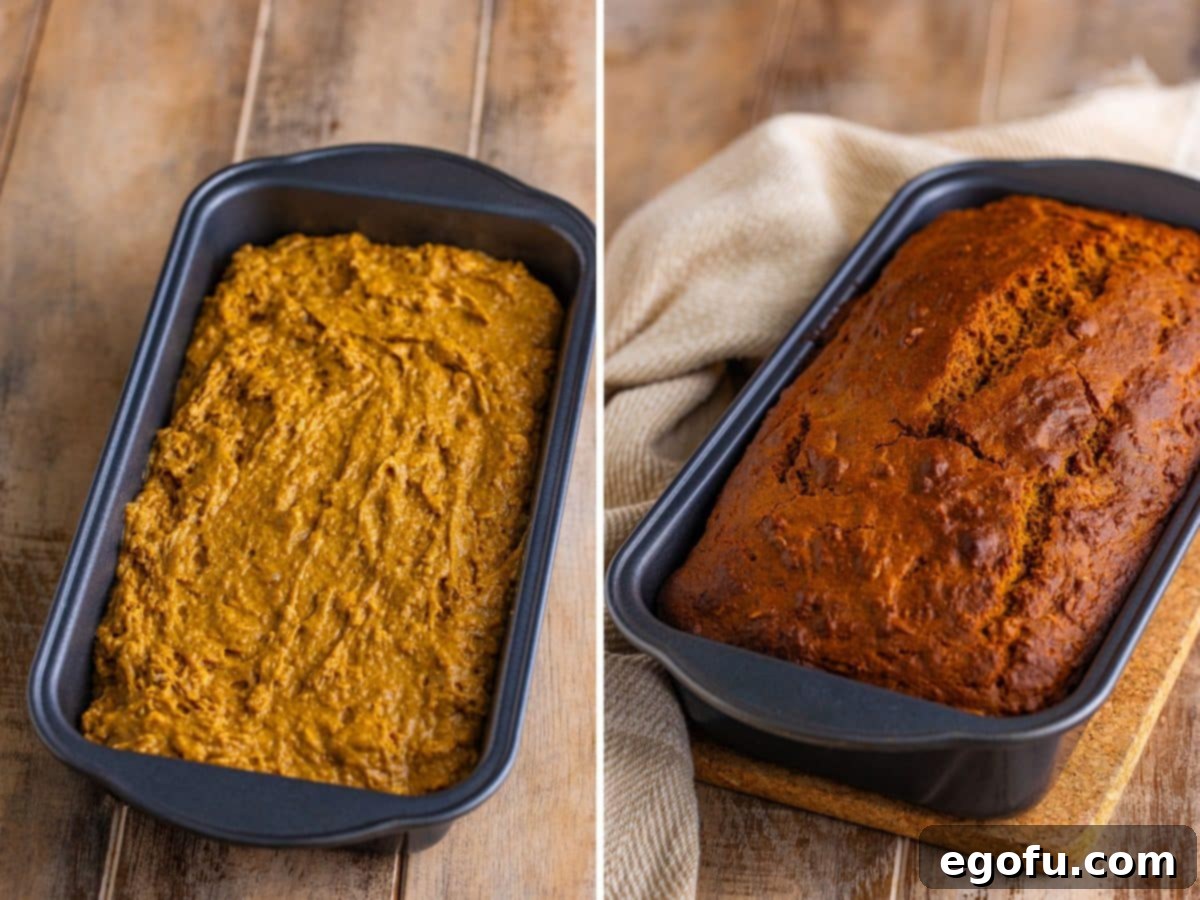
- Cool and Serve: Once baked, remove the pan from the oven and let the bread cool in the pan for about 10 minutes on a wire rack. This crucial resting period allows the bread to set and firm up, making it easier to handle and preventing it from falling apart. After 10 minutes, carefully invert the pan to release the loaf completely onto the wire rack to cool further. While it’s absolutely delightful served warm, allowing it to cool a bit more will result in cleaner, more defined slices. Slice it thickly and serve as desired – perhaps with a generous smear of butter, alongside your favorite meal, or simply on its own for a comforting treat. Enjoy the wholesome taste of homemade Irish Brown Bread!
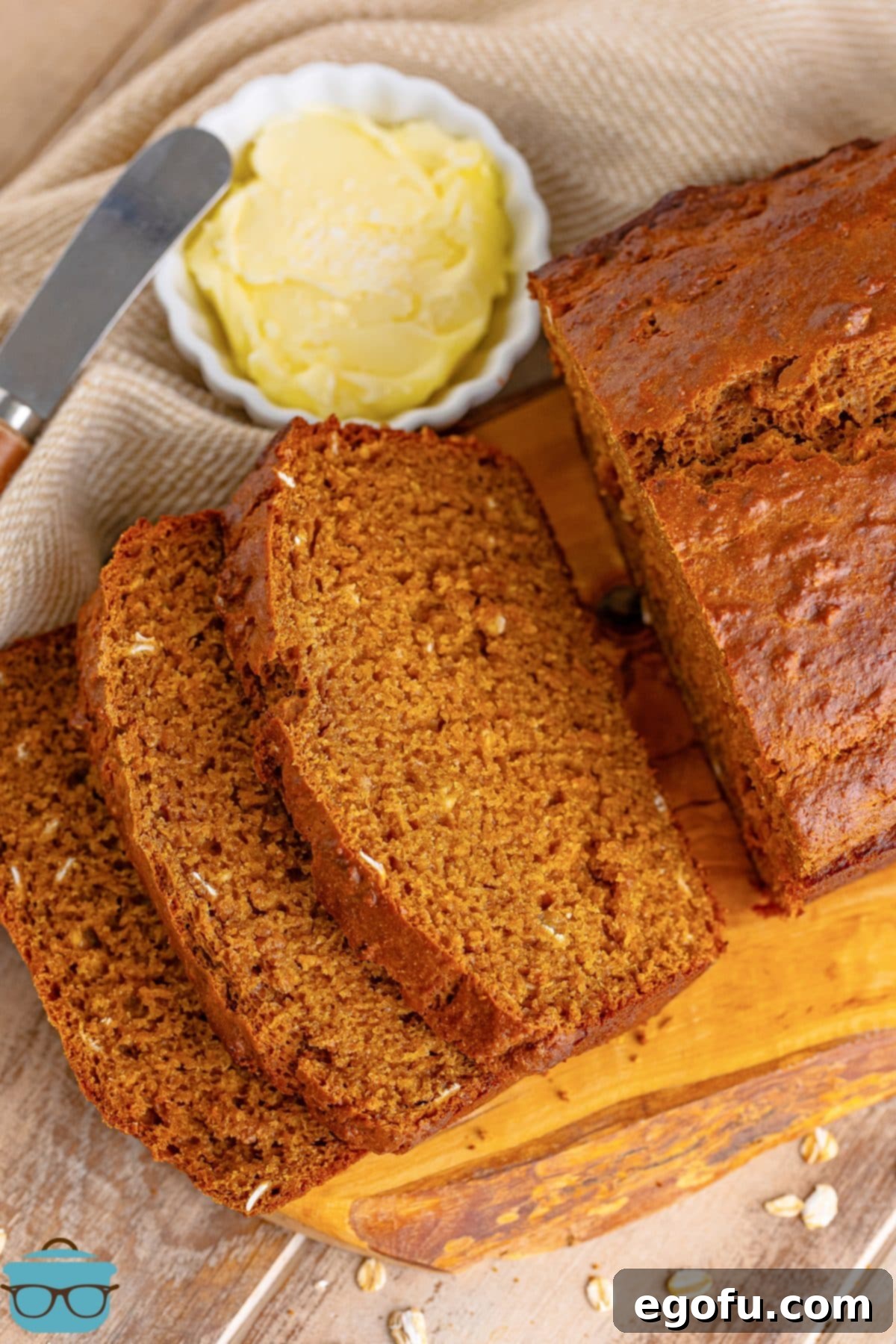
Discover More Delicious Recipes to Love!
- Irish Soda Bread
- English Muffin Bread
- Cheesecake Factory Brown Bread
- No Knead Dutch Oven Bread
- Cowboy Bread
- Zucchini Bread
- Easy French Bread
- Honey Wheat Rolls
- Homemade White Bread
- Easy Beer Bread
- Homemade Dinner Rolls
- Irish Apple Cake
- Slow Cooker Corned Beef
- Instant Pot Corned Beef (with Irish Slaw)
- Baileys Cupcakes
- St. Patrick’s Day Oreo Bark
- Baileys Chocolate Poke Cake
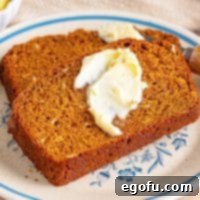
Irish Brown Bread
Print
Pin
Rate
10 minutes
55 minutes
1 hour 5 minutes
12
Brandie Skibinski
Ingredients
- 1 ¾ cups whole wheat flour
- 1 cup all-purpose flour
- ⅓ cup wheat germ
- ¼ cup rolled oats
- 1 teaspoon baking soda
- 1 teaspoon salt
- 2 cups buttermilk (I like a full fat buttermilk)
- ½ cup molasses
- ¼ cup honey
- 3 Tablespoons salted butter, melted
Instructions
- Preheat the oven to 350°F. Spray a 9×5-inch loaf pan with baking spray and set aside.
- In a large bowl, stir together 1 3/4 cups whole wheat flour, 1 cup all-purpose flour, 1/3 cup wheat germ, 1/4 cup rolled oats, 1 teaspoon baking soda and 1 teaspoon salt.

- To the bowl add 2 cups buttermilk, 1/2 cup molasses, 1/4 cup honey and 3 Tablespoons salted butter, melted and stir until there are no dry patches.

- Add the dough to the baking dish and smooth out the top.

- Bake for 50-55 minutes or until a toothpick inserted into the center comes out clean.

- Let it cool for 10 minutes in the pan, then place the bread on a wire rack to cool.
- Slice and serve while still warm or however you wish.

Notes
- For further details on substitutions, ingredient tips, and common questions, please refer to the comprehensive FAQ section and ingredient list provided above in this article.
Breads
Irish
Nutrition
Calories:
227kcal
|
Carbohydrates:
42g
|
Protein:
6g
|
Fat:
5g
|
Sodium:
356mg
|
Fiber:
3g
|
Sugar:
18g
Nutritional Disclaimer
Please note that any nutritional information provided is an estimate. As “The Country Cook” is not a dietician or nutritionist, we recommend consulting a professional or using an online nutritional calculator with the specific brands you use for precise values. Nutritional content can vary based on ingredients and brands.
Did you make this recipe?
Share it on Instagram @thecountrycook and mention us #thecountrycook!
